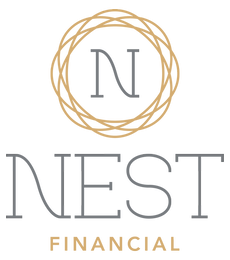Professionals earning substantial incomes face unique financial considerations and opportunities. Personal finance management for high earners is crucial for maximizing financial potential and securing long-term prosperity. In this article, we’ll explore tailored personal finance strategies designed to help high-income professionals optimize their wealth accumulation and achieve their financial goals.

Understanding Financial Opportunities
High-earning professionals have access to various financial opportunities, including investments, tax strategies, and asset protection vehicles. Understanding these opportunities is crucial for developing a comprehensive wealth-building strategy tailored to individual financial goals and circumstances.
Strategic Investment Allocation: Maximizing Returns through Diversification
Diversifying investments is paramount for high-income professionals seeking to safeguard their wealth while maximizing returns. By spreading investments across various asset classes, individuals can effectively mitigate risk and optimize portfolio performance. Here’s how strategic investment allocation can help you achieve your financial goals:
Mitigating Risk
One of the fundamental principles of investment is the relationship between risk and return. High-income professionals understand the importance of mitigating risk while aiming for substantial returns. Diversification allows investors to spread their assets across different types of investments, reducing the impact of market volatility on their overall portfolio. By allocating investments across diverse asset classes, including stocks, bonds, real estate, and alternative investments, individuals can minimize the risk of significant losses in any single investment.
Maximizing Returns
While minimizing risk is crucial, high-income professionals also aim to maximize returns on their investments. Strategic investment allocation involves balancing various factors such as risk tolerance, investment objectives, and time horizon to optimize portfolio performance. By diversifying across asset classes with different risk-return profiles, investors can potentially achieve higher overall returns while maintaining an acceptable level of risk. For example, allocating a portion of the portfolio to growth-oriented assets like stocks can capitalize on long-term appreciation potential, while including bonds can provide stability and income generation.
Building a Resilient Portfolio
A resilient investment portfolio is essential for weathering market fluctuations and achieving long-term financial success. High-income professionals recognize the importance of constructing a well-diversified portfolio that can withstand various economic conditions. Incorporating a mix of asset classes not only reduces the portfolio’s overall risk but also enhances its ability to generate consistent returns over time. Additionally, alternative investments such as private equity, hedge funds, and real estate investment trusts (REITs) can further diversify the portfolio and provide opportunities for capital appreciation and income generation.
Tailoring Allocation to Individual Needs
Effective investment allocation is not a one-size-fits-all approach; it requires careful consideration of individual financial goals and circumstances. High-income professionals should assess their risk tolerance, investment objectives, and time horizon to determine the optimal asset allocation strategy for their specific needs. Working with a financial advisor can provide personalized guidance and ensure that investment decisions align with long-term financial goals.
Tax-Efficient Planning: Maximizing After-Tax Income and Wealth Preservation
Effective tax planning is a cornerstone of financial success for high-income individuals, offering opportunities to minimize tax liabilities and preserve wealth. By implementing strategic tax strategies, such as utilizing tax-deferred retirement accounts, capital gains harvesting, and charitable giving, high earners can optimize tax efficiency and enhance their overall financial well-being. Here’s how tax-efficient planning can benefit high-income professionals:
Utilizing Tax-Deferred Retirement Accounts
One of the most powerful tax planning tools available to high-income individuals is the use of tax-deferred retirement accounts, such as 401(k)s, traditional IRAs, and Roth IRAs. Contributions made to these accounts are typically tax-deductible, allowing individuals to reduce their taxable income in the current year while deferring taxes on investment gains until retirement. Additionally, Roth IRAs offer the potential for tax-free withdrawals in retirement, providing valuable tax diversification and flexibility.
Implementing Capital Gains Harvesting
Capital gains harvesting involves strategically selling investments to realize capital gains or losses in a tax-efficient manner. High-income professionals can use this strategy to offset capital gains with capital losses, thereby reducing their overall tax liability. By carefully timing the sale of assets and utilizing available tax deductions, individuals can optimize their after-tax investment returns and preserve wealth over the long term.
Leveraging Charitable Giving
Charitable giving not only allows high-income individuals to support causes they care about but also offers significant tax benefits. Donations to qualified charitable organizations are typically tax-deductible, providing a valuable opportunity to reduce taxable income and lower tax liabilities. Additionally, strategies such as donating appreciated assets or establishing donor-advised funds can further enhance tax efficiency and maximize the impact of charitable contributions.
Seeking Professional Guidance
While understanding tax strategies is essential, high-income professionals can benefit greatly from working with qualified tax advisors who can provide personalized guidance tailored to their individual financial situations. A skilled tax advisor can help individuals navigate complex tax laws, identify opportunities for tax optimization, and develop comprehensive tax planning strategies aligned with their long-term financial goals.

Long-Term Wealth Preservation: Safeguarding Assets for Future Generations
Preserving wealth is not just about accumulating assets; it’s about safeguarding them for the long term and ensuring their continued growth and protection for future generations. For high-income professionals, proactive planning and asset protection strategies are essential to mitigate risks and preserve the wealth they’ve worked hard to build. Here’s how individuals can effectively preserve their wealth for the long term:
Establishing Trusts
Trusts are powerful tools for wealth preservation. They allow individuals to transfer assets to designated beneficiaries while retaining control over how those assets are managed and distributed. High-income professionals can establish various types of trusts, such as revocable trusts, irrevocable trusts, and asset protection trusts, to achieve specific goals such as asset protection, tax efficiency, and legacy planning. Working with experienced estate planning professionals ensures the creation of customized trust structures tailored to unique needs and objectives.
Creating Durable Powers of Attorney
In addition to trusts, high-income professionals should consider creating durable powers of attorney. These legal documents empower trusted individuals to manage financial affairs and make decisions on their behalf in the event of incapacity. Durable powers of attorney provide a crucial layer of protection by ensuring that someone capable and trustworthy is authorized to handle financial matters and make important decisions during times of illness or injury. Proactively appointing agents with the authority to act on their behalf helps individuals protect their interests and avoid potential complications.
Implementing Insurance Policies
Insurance serves as another valuable tool for wealth preservation, offering protection against unforeseen events and liabilities. High-income professionals should assess their insurance needs and consider implementing various types of policies, such as life insurance, disability insurance, liability insurance, and long-term care insurance, to mitigate risks and safeguard their assets. Maintaining adequate insurance coverage tailored to specific circumstances ensures protection and financial security for professionals and their loved ones in the face of unexpected challenges.
Regular Reviews of Estate Plans
Estate planning is an ongoing process that requires regular reviews and updates to ensure alignment with changing financial circumstances and objectives. High-income professionals should conduct periodic reviews of their estate plans, including trusts, wills, powers of attorney, and beneficiary designations, to account for life changes, tax law updates, and evolving financial goals. Staying proactive and engaged in the estate planning process enables individuals to adapt their plans accordingly and preserve their wealth for future generations.
Continued Financial Education and Adaptation: Keys to Long-Term Financial Success
In today’s rapidly changing financial landscape, continued education and adaptation are essential for high-income professionals seeking to achieve long-term financial success. With financial markets and regulations constantly evolving, staying informed about market trends, tax law changes, and investment opportunities is crucial for making informed decisions and adjusting financial strategies accordingly. Here’s why continued financial education and adaptation are vital for high earners:
Staying Informed About Market Trends
High-income professionals must stay abreast of market trends and economic developments to make informed investment decisions. Monitoring market indicators, economic reports, and geopolitical events can provide valuable insights into market conditions and potential investment opportunities. By staying informed about market trends, individuals can identify emerging opportunities, anticipate market shifts, and adjust their investment strategies accordingly to capitalize on market movements and achieve their financial objectives.
Keeping Up with Tax Law Changes
Tax laws and regulations undergo frequent revisions, impacting various aspects of personal and business finances. High-income professionals should stay updated on tax law changes, deductions, credits, and planning strategies to optimize tax efficiency and minimize tax liabilities. Working with qualified tax professionals and attending tax seminars or workshops can provide valuable insights into new tax laws and help individuals navigate complex tax situations effectively.
Evaluating Investment Opportunities
Continued financial education enables high-income professionals to evaluate investment opportunities and assess their potential risks and rewards. Understanding different asset classes, investment vehicles, and investment strategies empowers individuals to make informed decisions aligned with their financial goals and risk tolerance. Whether exploring traditional investments like stocks and bonds or alternative investments such as private equity and real estate, staying informed about investment opportunities is essential for building and preserving wealth over the long term.
Adapting Financial Strategies
Flexibility and adaptability are key traits of successful investors. High-income professionals should be willing to adapt their financial strategies in response to changing market conditions, economic trends, and personal circumstances. Whether adjusting asset allocations, rebalancing portfolios, or implementing new tax planning strategies, adapting financial strategies ensures alignment with evolving financial goals and objectives. By remaining proactive and responsive to changing dynamics, individuals can navigate uncertainties and position themselves for long-term financial success.

Conclusion
Strategic wealth building is a journey that requires careful planning, disciplined execution, and ongoing evaluation. By understanding financial opportunities, diversifying investments, implementing tax-efficient strategies, preserving wealth, and staying informed about market developments, high-income professionals can optimize their financial position and achieve their long-term financial goals.
FAQs
This article is brought to you by the wizard behind the scenes with 23 years of experience, Dan Dillard. Of course with his workshop of helpers including some handy hi-tech sourcing.
If you’re finding it challenging to stay on top of all the changes, connect with our financial planning professionals by scheduling a no-obligation call. At NEST Financial, we can help make crypto not quite so cryptic.
Find us on:
LinkedIn Facebook Yelp Twitter
If you like reading more entrepreneurial stories In Austin check out Dan’s other company foundingAustin. If you are into podcasts click here.
DISCLAIMER: We are legally obligated to remind you that the information and opinions shared in this article are for educational purposes only. These are not financial planning or investment advice. For guidance about your unique goals, drop us a line at info@nestfinancial.net

